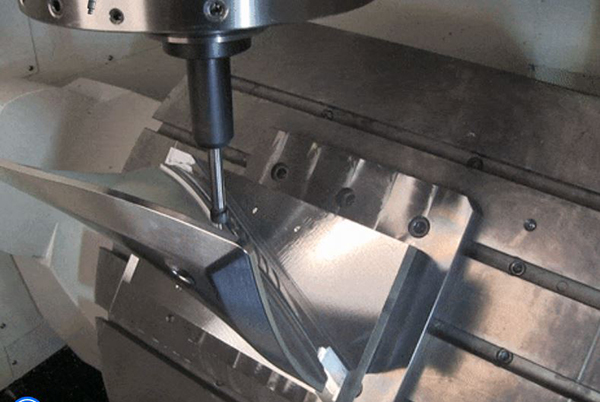5-Axis CNC Machining

5-Axis CNC Machining
5-axis machining provides infinite possibilities as to what shapes and sizes a part can effectively be machined.
Traditionally, machines have been either 1-axis (for example, a drill that only moves up and down on the y-axis) or 3-axis (a machine that can move up and down on the y-axis, left and right on the x-axis, and forward and back on the z-axis). In 5-axis machining, users get two extra axes, defined as A-axis, which is the tilting table, and C-axis, which is table rotation.
Benefits of 5-Axis Machining
5-axis machining provides a number of added benefits over 3-axis machining.
Additional Shapes and Sizes
With the additional axes, the cutting tool can approach the part from all directions in a single setup, enabling any sort of cut imaginable. The extra axes allow the machine to seamlessly cut curves and soft edges into almost any material. Undercutting is made simple as the additional movements allow for machining arcs and angles that could only be accomplished through multiple setups or fixtures on a 3-axis machine.
Here are a few examples of parts that can be machined using a 5 axis machine:
- Blades
- Curved parts
- Circular or cylindrical parts
- Angular cuts, including holes at complex angles
- Impellers
- Wheels
- Machinery shafts
- Reduced setups using 5 sided machining
Most machines are limited to either square or round parts, but our machines can create any combination of shapes in a single setup.
Less Machine Time
The ability to machine parts in their entirety without extra set up costs reduces the time the operator and the machine need to complete a part. In fact, machine time is reduced by ⅓ or more when using a 5-axis machine compared to a 3-axis. When it comes to repeat jobs, the machine is already programmed using the exact specifications. A number of our machines include pallet changers, eliminating load/unload time.
Greater Precision
With the proper time and setups, a 3-axis machine can do the work of a 5-axis machine, but not with the same precision. A machinist can create incredibly complicated geometries when using all 5 axes in conjunction and each job is 100% repeatable. The geometric tolerances are more closely related due to a single handling of the part.
When using a 3-axis machine, the potential for error increases with each new setup. Since 5-axis CNC machining only uses one setup, the margin of error is very low.
The added movement of a 5-axis machine allows the parts to be in closer contact to the cutting tool. The fourth and fifth axis can be reached through a shorter tool that vibrates less, resulting in a more smooth and precise surface finish.
Lower Cost and Lead Time
5-axis machining reduces several inaccuracies of traditional 3-axis machining by handling the part less, resulting in the lowest possible cost per part. It also increases tool life and reduces the need for expensive fixtures.
Longer lead times are required when using a 3-axis machine because of the amount of set up time required. If you need many of the same pieces produced, lead time will be shortened significantly by using a 5-axis machine with multiple pallets.